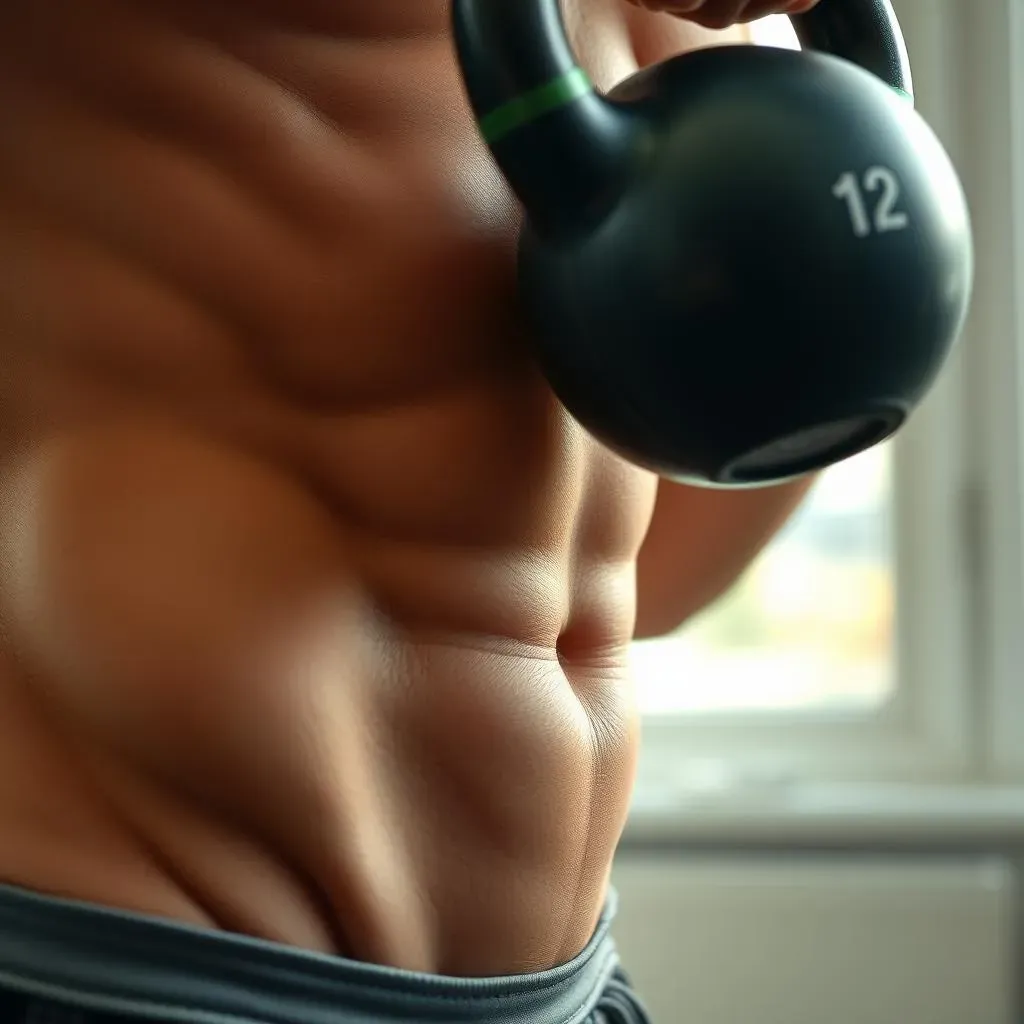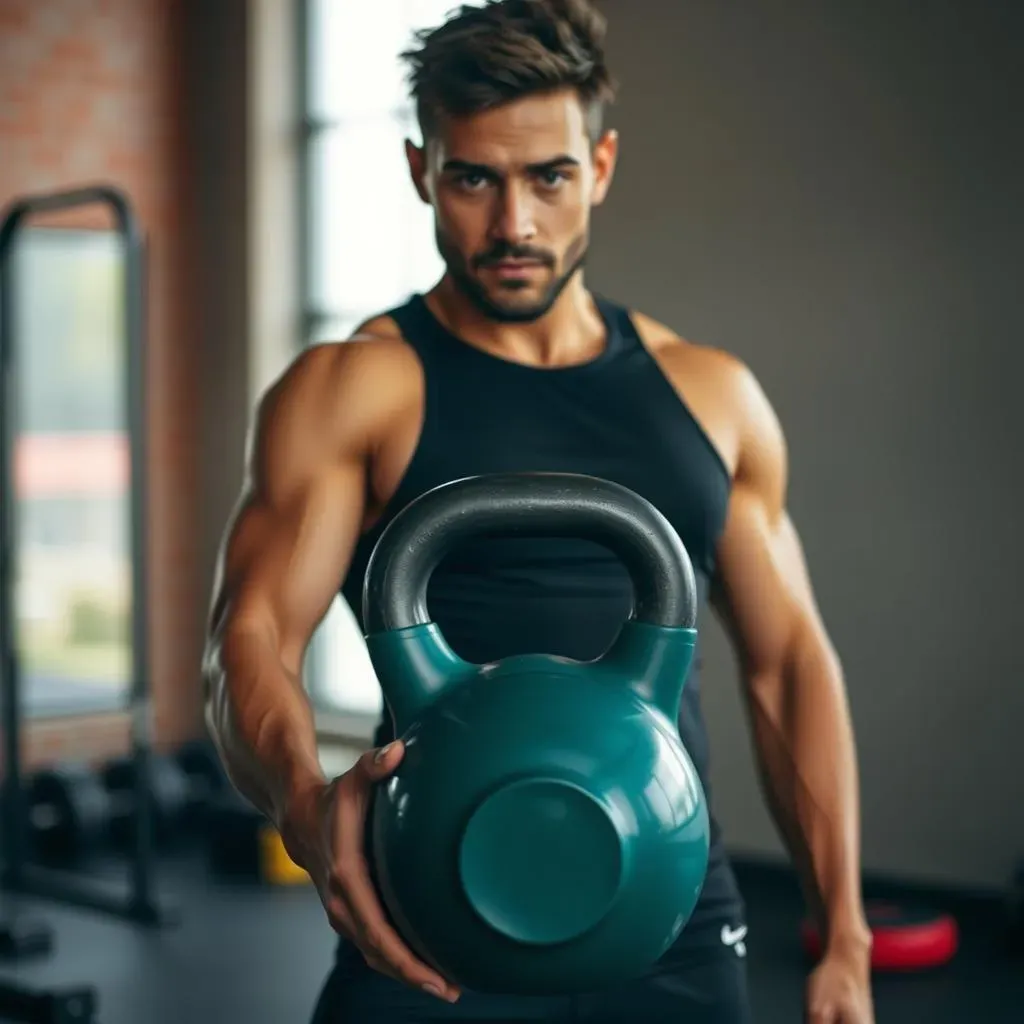Table of Contents
Forget endless crunches! If you're looking to sculpt a stronger core, you've come to the right place. A solid core isn't just about having a six-pack; it's the foundation for a healthy, injury-free body. In this article, we'll explore the power of the kettlebell for abs workout. We'll skip the boring stuff and jump straight into nine awesome exercises that'll challenge your core like never before. We'll uncover the muscles that make up your core, then I'll show you how to use a kettlebell to target them effectively. From swings to windmills and even the dreaded Turkish Get-Up, these moves will test your strength and stability. Think of it as a journey to a more resilient, powerful you, one kettlebell swing at a time. So, grab your kettlebell and let’s get started!
Understanding Your Core Muscles

Understanding Your Core Muscles
What's the Core, Really?
So, when we talk about your "core," it's not just about those washboard abs you see in magazines. It's more than that. It's a complex group of muscles that work together to stabilize your spine and pelvis. These muscles act like a natural weight belt, protecting your back and helping you move with power and precision. Think of your core like the trunk of a tree – it's the foundation that supports everything else.
Without a strong core, you're basically a wobbly tower of Jenga blocks waiting to fall. And who wants that?
Meet the Core Crew
Now, let's get to know the main players in this core crew. You've got your rectus abdominis, those muscles that give you the "six-pack" look. Then, we have the transverse abdominis, deep muscles that wrap around your torso like a corset. Don't forget the internal and external obliques, which run along the sides of your torso and help you twist and bend. And finally, there's the pyramidalis, a small muscle at the bottom of your abs that helps with tension.
It's like a team of superheroes working together to keep you upright and strong.
Muscle Group | Function |
|---|---|
Rectus Abdominis | Flexes the spine (think crunches) |
Transverse Abdominis | Stabilizes the spine and pelvis |
Internal and External Obliques | Rotates and bends the torso |
Pyramidalis | Tenses the abdominal wall |
Why Core Strength Matters
Having a strong core isn't just about looking good, it's about moving well. It helps with everything from picking up a heavy box to playing your favorite sport. A strong core improves your posture, reduces your risk of back pain, and makes you more efficient in all your movements. It's the secret sauce to being a more capable you. So, if you want to be able to jump higher, lift heavier, and move with more grace, you've got to focus on your core.
It's like having a superpower, but instead of shooting lasers, you have impeccable balance.
9 Kettlebell Exercises for a Stronger Core

9 Kettlebell Exercises for a Stronger Core
Kettlebell Dead Bug: Core Stability Starter
Alright, let's kick things off with the Kettlebell Dead Bug. Don't let the name fool you; it's not about playing dead. Instead, it’s about building a solid foundation by focusing on controlled movements. Lie on your back, arms extended toward the ceiling, and knees bent at a 90-degree angle. Hold the kettlebell in one hand and slowly lower the opposite arm and leg towards the floor, keeping your lower back pressed firmly on the ground. It’s like a slow-motion dance, where the goal is to maintain core engagement throughout. This move is fantastic for teaching your core to resist movement and keep you stable, which is crucial for those more dynamic exercises later on.
Think of it as your core’s way of saying, "I'm in control here."
Kettlebell Suitcase Carry: A Walk to Core Strength
Now, let's get up and walk with the Kettlebell Suitcase Carry. You're not just carrying a weight; you're challenging your core to stay upright and stable. Hold a kettlebell in one hand, like you’re carrying a suitcase, and walk. Sounds simple, right? The trick is to keep your torso upright and avoid leaning to the side with the weight. This exercise forces your core to work overtime to prevent you from tilting, strengthening your obliques and improving overall stability. It’s like your body is constantly making tiny adjustments to stay balanced.
This is what I like to call functional strength training at its finest.
Here's a quick tip: Start with a lighter weight and focus on maintaining good posture.
- Keep your shoulders square.
- Engage your core.
- Walk with a controlled pace.
Kettlebell Goblet March: Marching to a Stronger Core
Next up, we have the Kettlebell Goblet March. Hold the kettlebell close to your chest, like you’re hugging it tight. Now, march in place, lifting each knee high while keeping your core engaged. This isn’t just about lifting your legs; it's about using your core to stabilize your body while moving. You should feel your abs working hard to keep you upright and prevent any unwanted twisting. This exercise is great for improving core stability and coordination.
Plus, it's a great way to get your heart rate up.
Exercise | Target Muscles | Benefits |
|---|---|---|
Kettlebell Dead Bug | Transverse Abdominis, Rectus Abdominis | Core stability, anti-rotation |
Kettlebell Suitcase Carry | Obliques, Core Stabilizers | Lateral stability, functional strength |
Kettlebell Goblet March | Rectus Abdominis, Obliques | Core stability, coordination |
Kettlebell Ab Workout: Getting Started

Kettlebell Ab Workout: Getting Started
Choosing the Right Kettlebell
Okay, so you're ready to jump into the world of kettlebell workouts for your abs, that's awesome! First things first, let's talk about picking the right kettlebell. It's not about going super heavy right away; it’s about control and good form. For beginners, I'd suggest starting with a lighter weight, maybe around 8 to 12 pounds. You want something that feels challenging but still allows you to perform the exercises correctly. Think of it like learning to ride a bike – you wouldn’t start with a monster truck, right? It’s better to master the movements with a lighter weight and gradually increase the load as you get stronger. Trust me, your abs will thank you later.
I always say it’s better to start light and feel like you could do more, rather than start too heavy and risk injury.
Warm-up is Key
Before you start swinging that kettlebell around, let's make sure your body is ready. A good warm-up is crucial to prevent injuries and get your muscles prepped for action. I recommend a dynamic warm-up, which means movements that get your blood flowing and your joints moving. Think of things like arm circles, leg swings, torso twists, and some light cardio, like jumping jacks or high knees. Spend about 5-10 minutes on your warm-up, and you'll be good to go.
It’s like giving your muscles a little pep talk before the big game.
Warm-up Exercise | Duration | Purpose |
|---|---|---|
Arm Circles | 1 minute | Loosen shoulder joints |
Leg Swings | 1 minute per leg | Activate hip muscles |
Torso Twists | 1 minute | Prepare core for movement |
Jumping Jacks or High Knees | 2 minutes | Increase heart rate |
Listen to Your Body
Finally, remember to listen to your body. If something feels off, don't push through the pain. It's okay to take breaks when you need them, and it’s definitely okay to adjust the exercises if they don't feel right for you. You are on your own fitness journey and there no need to compare your progress to others. Consistency and proper form are way more important than lifting the heaviest weight or doing the most reps.
It's not a race, it's a marathon, and your body will thank you for taking it slow and steady.